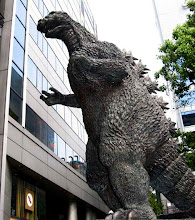


I remember going almost a year ago to the Metropolitan Museum with my childhood buddy, NYC Brooklyn resident Diego Dax Rooks *aka prux, and going in an elevator to the roof top of the museum. The day was sunny and the people in the elevator crowded, I remember the elevator made a stop at some floor and some staff of the Met came in the elevator. I remember flirting with a girl staff she was really cute...and at the roof top they were displaying some works of Jeff Koons...
Jeff Koons (born January 21, 1955) is an American artist whose work incorporates kitsch imagery using painting, sculpture, and other forms, often in large scale.
Koons was born in York, Pennsylvania; as a teenager he revered Salvador Dalí, to the extent of visiting him at the St. Regis Hotel in New York City. Koons studied painting at the School of the Art Institute of Chicago and the Maryland Institute College of Art. After college, he worked as a Wall Street commodities broker while establishing himself as an artist. He gained recognition in the 1980s and subsequently set up a factory-like studio in a SoHo loft on the corner of Houston and Broadway in New York. It was staffed with over 30 assistants, each assigned to a different aspect of producing his work—in a similar mode to Andy Warhol's Factory.
Copyright litigation
Koons has been sued several times for copyright infringement over his use of pre-existing images in his work. In Rogers v. Koons, 960 F.2d 301 (2d Cir. 1992), the U.S. Court of Appeals for the Second Circuit upheld a judgment against him for his use of a photograph of puppies as the basis for a sculpture, String of Puppies.[21]
Koons also lost lawsuits in United Features Syndicate, Inc. v. Koons, 817 F. Supp. 370 (S.D.N.Y. 1993), and Campbell v. Koons, No. 91 Civ. 6055, 1993 WL 97381 (S.D.N.Y. Apr. 1, 1993). More recently, he won a lawsuit in Blanch v. Koons, No. 03 Civ. 8026 (LLS), S.D.N.Y., Nov. 1 2005 (slip op.),[22] affirmed by the Second Circuit in October, 2006, brought over his use of a photographic advertisement as source material for legs and feet in a painting, Niagara (2000). The court ruled that Koons had sufficiently transformed the original advertisement so as to qualify as a fair use.




No comments:
Post a Comment